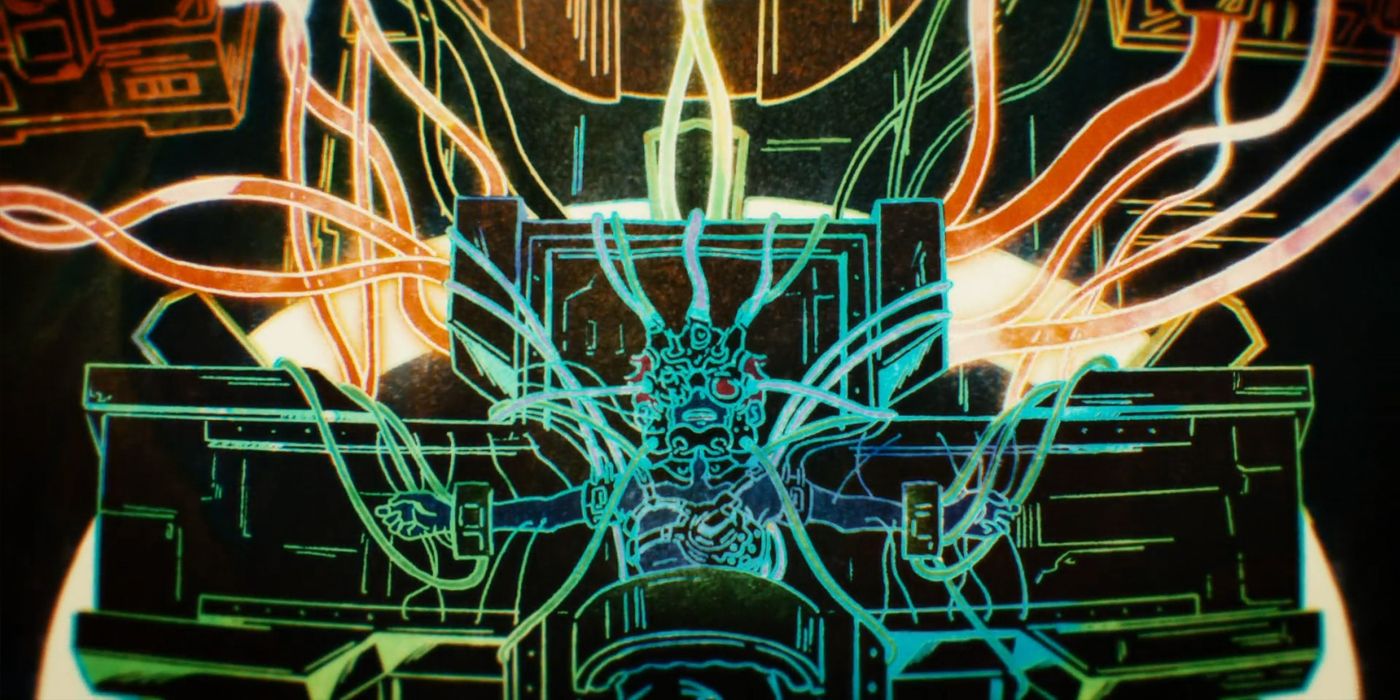Warning: Spoilers for Trigun Stampede, Episode 6Fans of Trigun Stampede may have been a bit surprised at its most recent episode, which saw a massive style shift towards a traditional animation style for certain segments. Despite the radical change, though, the episode is far better off as a result.
In episode 6, Trigun Stampede dives into Wolfwood’s backstory, bringing with it a 2-D, traditionally drawn style, rather than the series’ trademark CGI-derived style. The change in style puts viewers into a different mindset, hammering home the idea that these events unfolded long ago. It also manages to provide a little insight into Wolfwood himself in an impressive display of character nuance.
Wolfwood’s 2-D Flashbacks Add Depth to Him

The first flashback segment is about 7 minutes into the episode and is drawn over a background similar to weathered paper, giving it something of a sepia-like effect, a visual signifier for memories. The style is simple and uses warm colors, further drawing the connection to a rose-colored look at the past. Despite being set in an orphanage, these are Wolfwood’s happiest days in Trigun, after all, when he would spend time with his little brother Livio, getting up to trouble. The second flashback segment, though, takes a wild turn. As the young Wolfwood is experimented upon and drugged, the imagery becomes almost psychedelic in nature, colorful and surreal, as he sees Livio and others from the orphanage calling out to him in his mind. As soon as the experimentation memories are over, though, and Wolfwood has his adult appearance, it cuts hard back to the CGI, delineating the moment that this hopeful child was successfully destroyed.
It’s not uncommon in anime for flashbacks to see a major style shift to help illustrate the fact that they’re flashbacks. A story from a very long time ago might emulate historical styles, for example, or a memory of childhood could be shown with simplistic, child-like drawings, perhaps even in crayon. Using a 2-D style in a show that’s otherwise 3-D, though is certainly an unusual move, but it works perfectly here in both instances. A traditionally drawn image certainly calls back to past eras when compared to 3-D CGI, making it feel as if perhaps it was a flashback to another era of Trigun. The surreal elements are also much, much easier to pull off in traditional style, as it offers more control over exactly how things look and move, ensuring that psychedelic feeling is captured properly.
While only a few episodes in, Trigun Stampede has certainly proven its CG style with incredible action scenes and one-shots. Now, the series has proven that it can handle other styles as well and knows exactly when best to use them for maximum effect.
Trigun Stampede debuts new episodes on Saturdays, via Crunchyroll.




